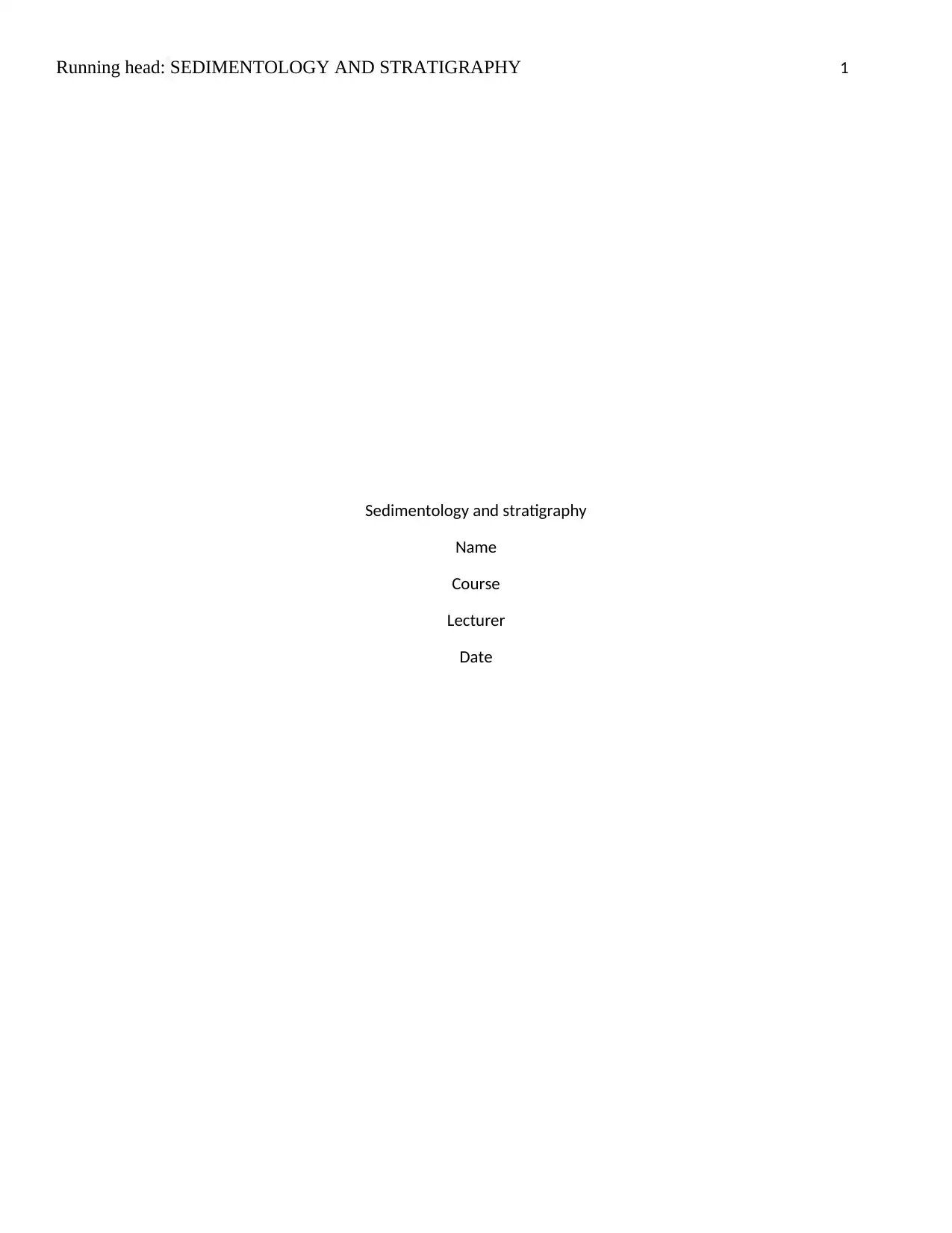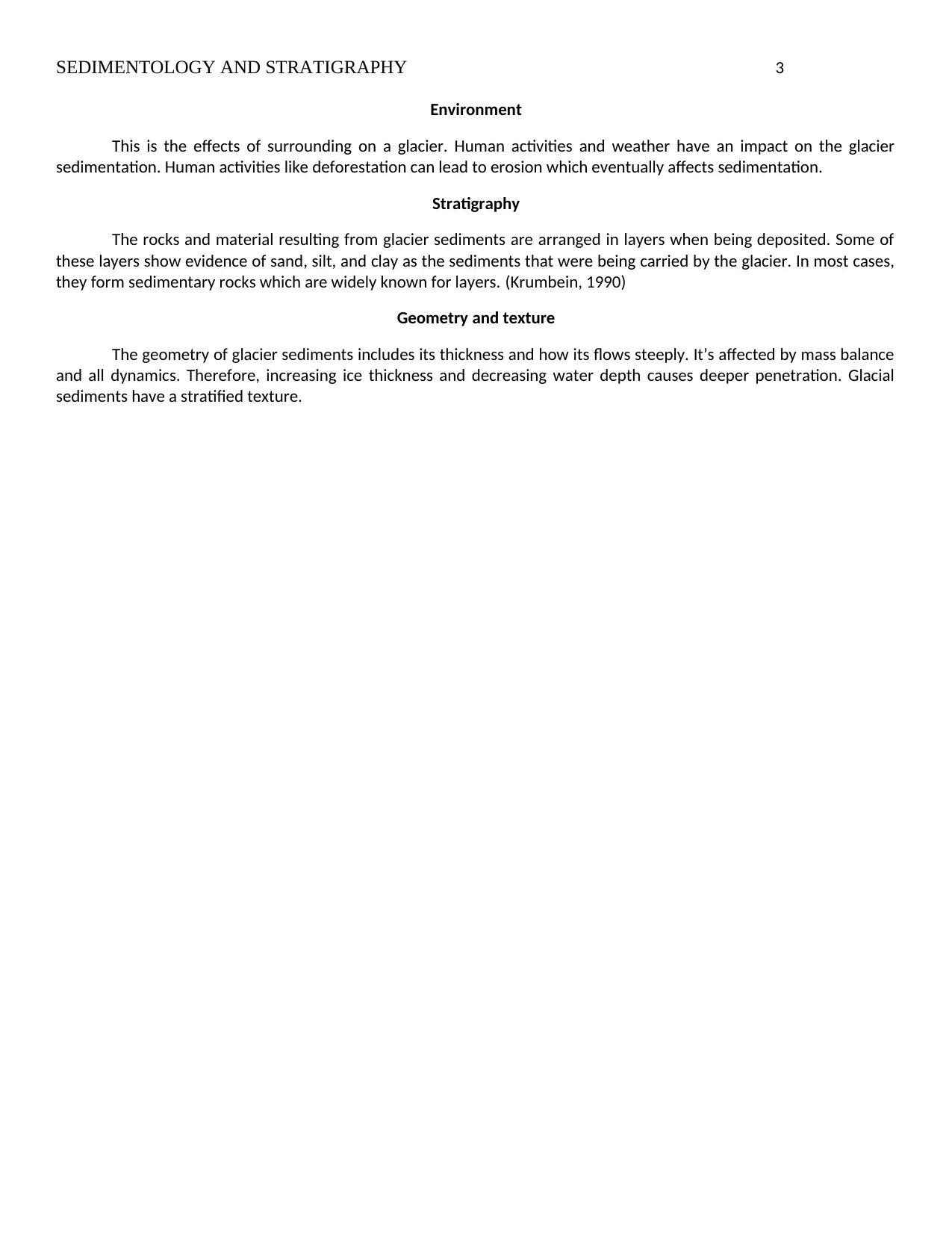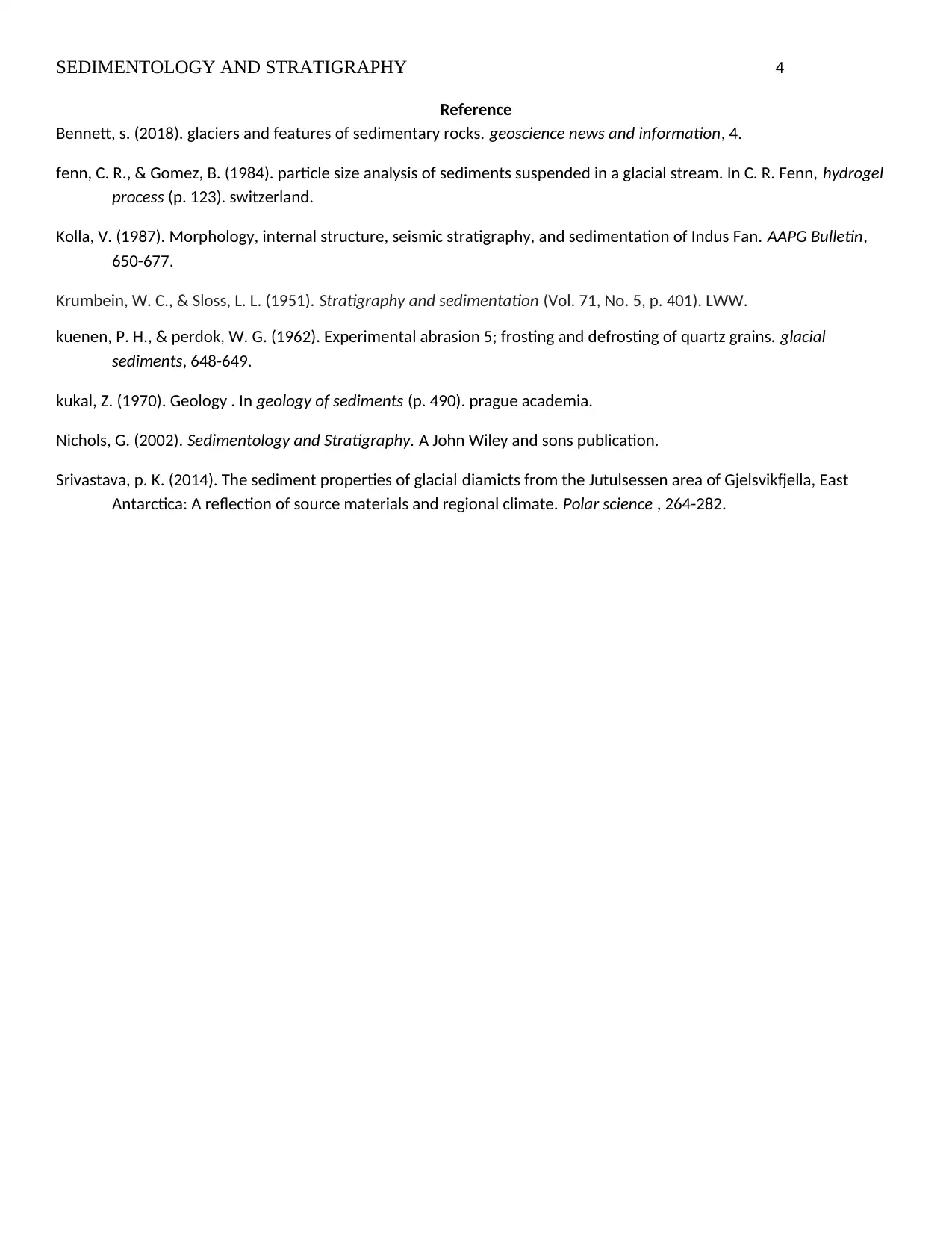Report on Glacial Sedimentology and Stratigraphy Analysis
VerifiedAdded on 2023/06/14
|4
|1139
|351
Report
AI Summary
This report delves into the sedimentology and stratigraphy of glacial environments, examining the composition of glacial sediments, which include rocks, soil, debris, and sand, transported and deposited by glaciers. It distinguishes between clastic and chemical sediments, detailing their formation processes and mineral compositions, such as quartz, biotite, and feldspar. The report further analyzes grain size distribution, influenced by mechanical crushing and chemical reactions, and discusses the morphology, color, sorting, porosity, and cement composition of glacial grains. It also addresses the impact of environmental factors and human activities on glacial sedimentation. Stratigraphy is explored through the layered arrangement of glacier sediments, often forming sedimentary rocks, with an emphasis on the geometry and stratified texture of these deposits. The document concludes by referencing key studies in the field, providing a comprehensive overview of glacial sedimentology and stratigraphy.
1 out of 4







![[object Object]](/_next/static/media/star-bottom.7253800d.svg)